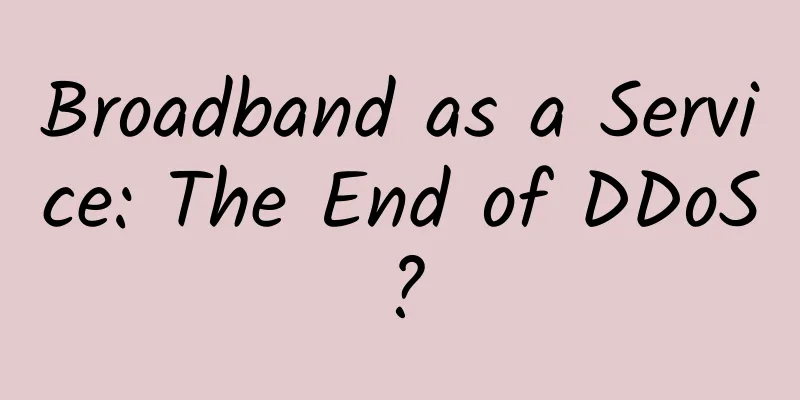Microsoft is exploring high-speed wireless networks in data centers

|
In a recent filing with the Federal Communications Commission, Microsoft said it plans to explore the use of wireless communications in data centers. Microsoft is seeking to test the feasibility of a wireless communications network within its data centers near its headquarters in Redmond, Washington. In a recent filing with the Federal Communications Commission (FCC), Microsoft said it wants to "explore the use of wireless communications ... to supplement wired communications links within data centers." However, when the media further verified the document, Microsoft refused to provide any specific information. The company only said that it would choose the equipment of network testing supplier Keysight Technologies for testing, and the relevant testing request had been approved by the Communications Commission in January this year. Related detailsHowever, Microsoft's proposal still reveals several interesting details, including the use of frequency bands in the range of 246 GHz to 275 GHz. This part of the extremely high frequency band has been determined to be used for future 6G networks. Although it can carry a lot of data, its broadcast range will be very limited due to the physical laws of high-frequency transmission. But Microsoft is confident that this "sub-THz" frequency band is very suitable for use in data centers. "Sub-THz links have a number of characteristics that make them attractive for data center applications," Microsoft wrote in its filing with the FCC. "First, highly directional beams, achieved through large element antenna arrays, allow for the coexistence of multiple communication links through spatial multiplexing. Sub-THz waves have a shorter range due to their greater atmospheric attenuation, but this also enhances spatial multiplexing capabilities. Directional antenna arrays enable the establishment and removal of RF links on demand. The spacious indoor operating environment and controlled building walls of the data center minimize the necessary propagation range of the RF, establish broadband high data rate links while effectively controlling external interference, and promote effective band sharing and coexistence." Microsoft also mentioned free-space optics (FSO) technology in its filing. FSO uses light beams that travel through free space rather than internal cables to transmit data wirelessly. FSO is not a new concept. The technology first appeared in the 1960s, and several FSO companies tried to use it as a transitional communication solution before the full implementation of 3G networks in the early 2000s. Even in the 5G era, this topic has been brought up again. In addition, Microsoft acknowledged that the idea of using FSO technology in the data center has been proposed by others. “However, such optical links often perform poorly in data centers due to the difficulty in accurately controlling beam pointing under vibration conditions,” the company wrote in the filing. “We expect that sub-THz RF should not have such calibration issues due to the relatively wider and tunable beams. The ability to quickly electronically steer RF beams also allows us to develop appropriate control loops to further mitigate the transmission stability challenges caused by equipment vibration.” Microsoft's data center expansion ambitionsMicrosoft's focus on data center internal communication issues is not surprising. In the last quarter of last year alone, Microsoft's data center capital expenditures reached $9.7 billion, a year-on-year increase of 55%. The main reason for the rapid increase is that Microsoft has been deploying high-performance computing facilities for running AI loads in Azure cloud data centers. According to previous media reports, such large-scale AI investment has also spawned the need for new communication technologies within data centers. The core of this demand is to connect GPUs (graphics processing units) that support AI development to each other. Suppliers such as Corning and Coherent have been selling their communication components to data center operators to enhance the communication capabilities of the internal operating system of the data center. In a recent note to investors, financial analysts at TD Cowen compared Microsoft to hyperscale infrastructure operators such as Amazon, Meta and Google and concluded that "Microsoft remains the most active lessor of data center capacity among hyperscale operators, following the rapid growth of its leasing business in 2023. In addition, our survey shows that the drivers behind Microsoft's large data center capital expenditures can be summarized into an internal consensus: Microsoft has a clear path to monetize AI by integrating AI into its existing product set and launching new AI solutions. Considering the AI deployment architecture foundation that is ahead of other hyperscale infrastructure operators, Microsoft has a significant lead over its peers in securing data center leased capacity." Therefore, the renewed focus on the ultra-high frequency band and investment in FSO technology may stem from Microsoft's long-term plan to design and develop new data centers. Of course, this attempt is also likely to bring challenges and even threats to Cisco, Corning, Coherent and other manufacturers that have long provided internally adjusted communication optical hardware for data centers. |
<<: Why are “low-altitude economy” and “synaesthesia” worth paying attention to?
>>: Performance: Network Communication Optimization and Communication Protocol
Recommend
edgeNAT VPS/dedicated servers are 20% off for monthly payment and 30% off for annual payment. Hong Kong VPS bandwidth upgrade price remains unchanged
edgeNAT is a Chinese host provider established in...
The 5G Revolution: Unveiling the Future of Healthcare
Evan Kirstel, Chief Digital Evangelist and Co-Fou...
Ruijie Networks' scenario-based wireless technology helps Suning's new shopping model of "Internet + Retail"
As a leading enterprise in China's private en...
edgeNAT Anniversary Sale 40% off, Hong Kong/Korea/US Data Centers Available
edgeNAT launched its first anniversary celebratio...
Is the golden mean the way to go in data centers? CommScope's new products help maximize data center network effectiveness
[Original article from 51CTO.com] After years of ...
WonderShaper: Network card speed limit tool
1. What is WonderShaper WonderShaper is a tool fo...
The impact of next-generation communication protocols on smart building technology
The emergence of next-generation communication pr...
Good news! Deepin Technology won the title of "National Intellectual Property Demonstration Enterprise"
Recently, the National Intellectual Property Admi...
Have you learned how to configure multiple public IP addresses?
background For some customers working on video an...
IoT and 5G: A blessing or a curse?
The UK's recent decision to phase out Huawei ...
The 5G commercial era is coming, and large-scale commercial use will be achieved in 2020
The Ministry of Industry and Information Technolo...
Inventory | 7 major acquisitions in the cybersecurity field recently
Cybersecurity is more important today than ever b...
The interviewer asked about the ZAB protocol right away, and I was trembling...
[[391275]] Zookeeper achieves the final consisten...
[Black Friday] SpartanHost Dallas VPS 50% off, optional AMD or E5 series, 10Gbps bandwidth, high-security VPS
SpartanHost has launched the 2023 Black Friday pr...









